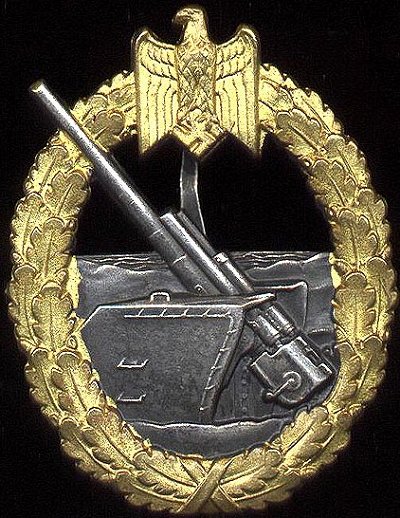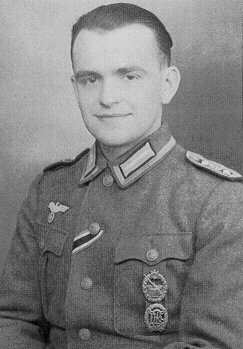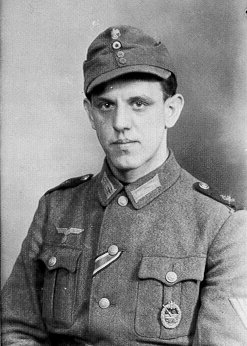
by Sebastián Bianchi
The
coastal artillery service was the Kriegsmarine branch responsible for protecting
the Reich’s coastal borders from both air and sea attack.
On June 24, 1941 Grand Admiral Raeder instituted the War Badge of the Coastal Artillery to reward the actions of both individuals and crew members.
Manufacturing and Technical Information
Designed
by Otto Placzek of Berlin, the badge consists of two rows of oak leaves in the
form of a wreath. Inside the wreath
is a coastal artillery piece with the ocean in the background.
Centered at the top of the badge is an eagle with downward facing wings
at its side clutching a swastika. Original
examples have 15 full oak leaves per side with two partial leaves at the top
near the national emblem. The
wreath and national emblem are finished in gold while the remaining areas have a
gray finish. As the war progressed and material quality declined the
finish wore off more quickly, giving a gray overall appearance to many examples.

M. Miller collection
Presentation, Wear and Documents
The
badge was presented in a titled envelope and was worn on in the middle of the
top most tunic pocket.


Award Criteria and Statistics
Individuals
had to display significant leadership qualities or any single act of "merit
in action" for which no other award was given.
Crew members badges were issued using a points system, with eight points
resulting in the award. Gun crews which downed an aircraft unassisted were given
two points. If assistance from another crew was necessary only one point was
awarded. Searchlight crews, fire-control personnel, sound-locater crews, and
radio operators were also entitled to the award but only received half a point
for each first detection. It could also be awarded posthumously for death in
action or accident on duty.
The
award was initially intended for members of the coastal air defense force, but
not long after its institution it was expanded to include crew members of guns
positioned against naval targets.

![]()
© Copyright Wehrmacht-Awards.com LLC |